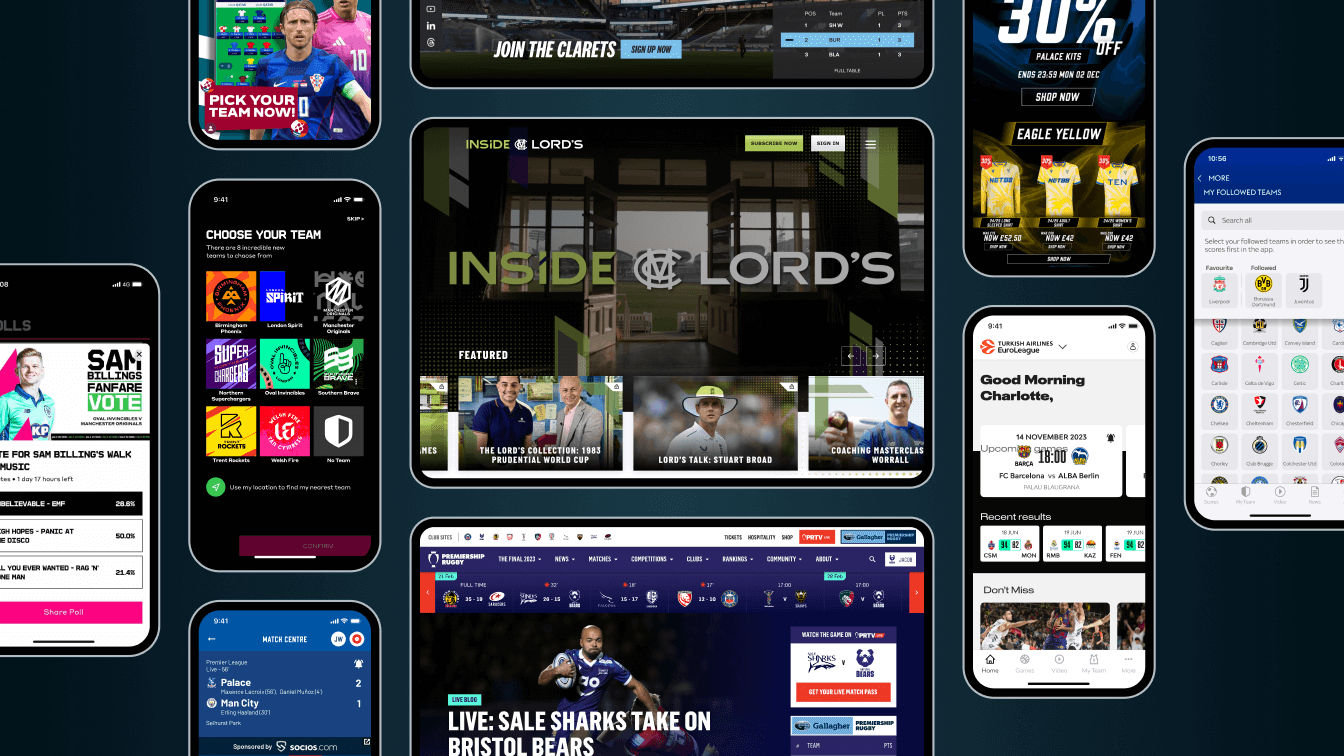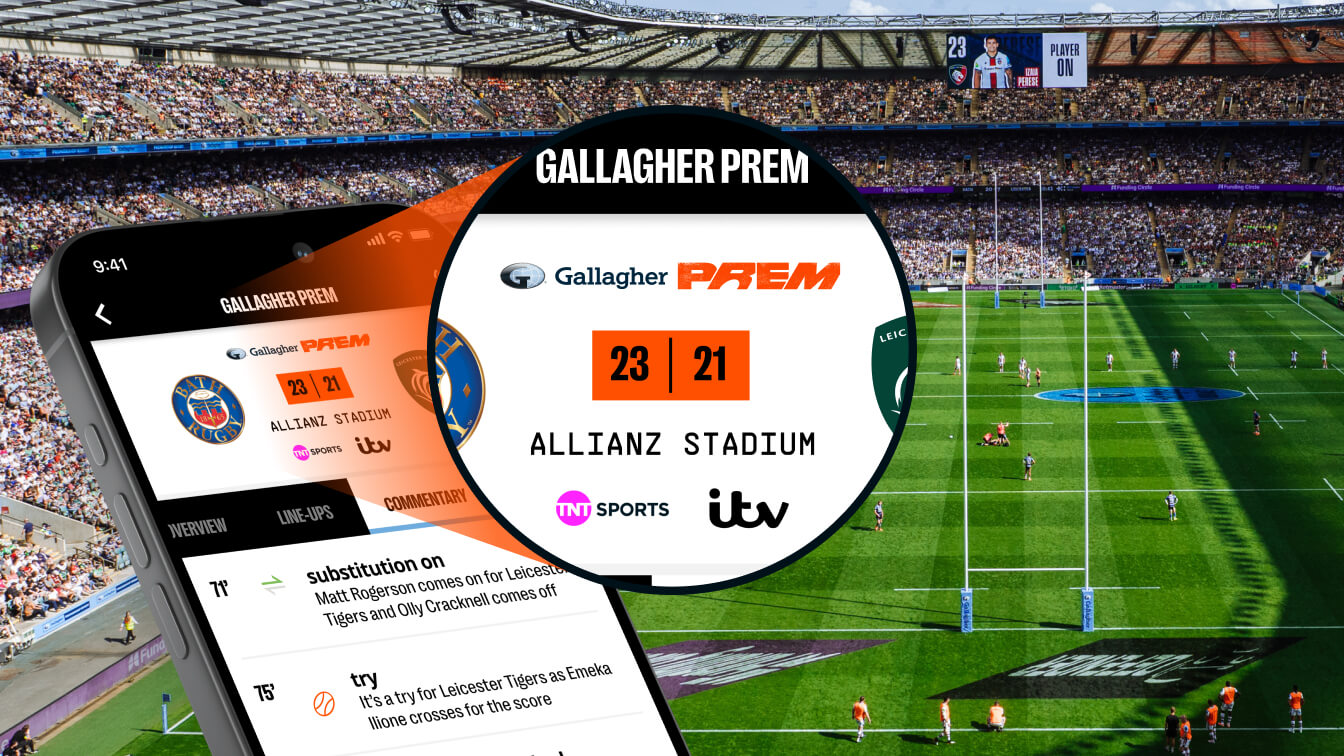
This article explores how to create high-impact sports content for social media, drawing insights from InCrowd Content Teams work across UEFA digital channels. It covers strategies like audience targeting, platform-specific content, real-time execution, and continuous optimisation. Mastering these tactics boosts fan engagement and expands reach.
Why does some sports content go viral and most go unseen?
Sports content moves fast. If your team is not creating with purpose, your message will disappear in the scroll. However, great content is not just about reacting fast, it’s about knowing what works, where, and for whom.
In this InCrowd guide, we break down how to create social-first sports content that drives engagement, relevance, and reach. We draw on InCrowd’s experience managing content for UEFA’s most-followed web and social channels.
If you're ready to create with clarity, not guesswork, this is your playbook.
Why listen to us?
At InCrowd, we manage the most-followed web and social channels in the world. Our team creates and delivers content that engages millions of fans during the biggest moments in global sport.
We do not guess, we plan, execute, and optimise daily. That gives us unmatched insight into what makes sports content succeed on social media, and how you can apply it to your own channels.
What is social-first sports content creation?
Sports content creation is the process of producing media that engages fans around teams, players, competitions, and moments, but on social media, it’s far more dynamic. It’s real-time, trend-driven, and highly visual.
.jpg)
Unlike broadcast or in-venue content, social-first content must adapt quickly. It blends live coverage, short-form video, interactive formats, and platform-specific storytelling designed to stop the scroll and spark engagement. The best creators know the sport and the culture around it, and combine both with expert channel knowledge to create authentic connections with fans.
How to master sports content creation for maximum engagement
1. Define your content purpose and audience
Before you create anything, define exactly what your content is trying to achieve, and for whom. Audience and purpose are inseparable. Without clarity on both, your content risks falling into the void of algorithmic indifference.
At InCrowd, content creation always starts with segmentation. Different sports, different tournaments and different tournament stages bring different audience profiles. Are you dealing with casual fans? Finals engage die-hards? Each moment expects a distinct tone, format, and level of insight.
Avoid creating “general” content. Instead, map each asset to a defined audience type and purpose, such as:
- New followers looking for exclusive content and behind the scenes access
- Sponsors aiming to activate branded messages within authentic storytelling
- Broad audiences attracted by culturally relevant or trending themes
Purpose should also define KPIs. Are you optimising for shares, retention, or CTA clicks? Align your metric with your message, and resist the urge to chase every trend.
Audience-first content isn’t just more relevant, it’s more efficient. It lets you cut through the noise with fewer posts and more impact. That’s how InCrowd keeps UEFA’s channels consistent, timely, and fan-focused throughout complex tournament cycles.
2. Build a platform-specific content strategy
Each social media platform has its own rules of engagement. Success in sports content creation comes from customising strategy to platform behaviours, not repurposing the same asset everywhere.
Across UEFA’s channels, we plan unique creative directions per platform. TikTok focused on fast-paced edits and trend alignment, Instagram prioritised reels and carousel storytelling, and X became the home for reactive commentary and live updates.
Build creative templates that respect each platform’s visual language and tone, and adjust your content stack accordingly. If the same team runs every channel, centralise planning but decentralise execution.
Our evolving platform-aware strategies help clients deliver consistent narratives across all touchpoints without blending their content into background noise.

3. Create a flexible but structured content calendar
A strong content calendar ensures coverage of core moments, matchdays, milestones, sponsorship activations, while leaving space to adapt to form, storylines, or breakout trends.
Our content delivery for UEFA involved multi-layered calendars. Long-term planning sets the rhythm, while tactical updates are added daily to reflect live shifts during tournaments. Planning doesn’t slow creativity, it gives it structure and gives space to react to stories and trends.
Use shared tools to make the calendar visible to all stakeholders, marketing, design, production, and commercial teams. Align on approval workflows to speed up delivery without sacrificing quality.
UEFA’s success came from flexibility within structure. By balancing fixed content (like pre-scheduled graphics) with agile tools for live posting, we helped UEFA’s channels stay responsive without missing key moments.
Structure gives confidence. Flexibility gives reach. When both work together, you create content that feels timely, intentional, and fully aligned with fan attention.
4. Produce and deliver in real time
Real-time content is where social media teams stand out with unrivalled access to on the pitch moments with a unique, up close, vertical and more personal view point. Organic moments do not wait, neither do the fans. You need workflows that allow your team to ideate, create, approve, and publish within minutes, not hours.
There’s always a chance to revisit the story with added context. Incorporate exclusive phone-shot or broadcast footage — which may only surface after the event — to deepen the narrative and reveal emotion through never-before-seen angles. This refreshed version adds a new layer to the moment and can engage a wider audience, including those who don’t yet follow your accounts.

We have worked shoulder-to-shoulder, on the ground and pitch side, with UEFA’s editorial and media staff during tournaments. That embedded model allowed for immediate coordination, turning standout goals, fan moments, or controversies into timely, platform-optimised content across channels.
To produce real-time content effectively:
- Pre-design visual templates for rapid deployment (hype, milestones and goals etc)
- Assign roles: who captures, who edits, who posts
- Create on-the-fly captioning and localisation systems
- Use cloud-based tools that allow cross-team access for approvals
- Run drills before key events to pressure-test your process
Speed must never sacrifice brand voice or visual consistency. We mitigated this by combining creative guardrails (fonts, colour palettes, tone) with editorial freedom, letting UEFA’s social channels react quickly and stay on-brand.
Real-time does not mean chaotic. It means prepared. You’ll be judged not just on the quality of your posts, but on whether they showed up at the right moment.
When you’re the first to capture a feeling, fans remember.
And they return for the next one. That’s how real-time content builds long-term attention.
5. Measure, learn, and optimise continuously
Publishing is just the start. Every post delivers insight, if you’re set up to capture and act on it. A strong feedback loop sharpens your instincts and helps content evolve with fan behaviour.
Our work across UEFA tournaments included performance analysis to refine content mid-campaign. If a format underperformed, it was replaced. If a trend surged, it was tested across platforms with adjusted creative.
Key areas to track:
- Engagement rate by format (video, static, carousel, poll)
- Audience retention (especially for short-form video)
- Platform-specific behaviours (e.g. TikTok completion rates vs. Instagram saves)
- Timing and frequency effectiveness
- Resource efficiency
Don’t rely solely on platform analytics. Build dashboards that compare performance across channels and align content results with business goals, like partner impressions or traffic driven to owned platforms.
Optimisation is not just about growth, it’s about not standing still. UEFA’s success came from a test-learn-adapt rhythm that let their channels stay relevant from opening fixture to final whistle. Consistency wins followers. Iteration keeps them engaged.

Make every post count
Sports content creation isn’t about filling feeds; it’s about capturing moments, shaping stories, and building daily relevance with fans. Success comes from having the right strategy, the right structure, and a team that can deliver in real time.
InCrowd helps sports organisations create high-impact, platform-specific content that engages millions of fans. We ensure that content is more than just output, it is a key driver of growth, fan loyalty, sustained engagement and revenue across digital channels.
Ready to elevate your social content? Let’s build what your fans actually want to see - contact us now.



